 |
|
|
Published: 10/20/2004 (updated 10/29/2004 for Splinter Cell benchmarks) |
|
|
Intro/Specs | 2D/Video Performance | 3D Performance | Game Performance |
|
|
|
|
|
As you've seen from some other test pages, the 6800 often hasn't shown a big gains over the older design 9800 (with more mature drivers), although few if any apps currently are really using most of its features, or its most efficient paths. (Sounds familiar doesn't it... par for the course with new graphics cards.) To repeat comments I made in previous reviews, performance of any graphics card depends on factors such as:
For game tests high resolutions/high detail settings were used in the hopes that even for highly CPU bound games, that would help show some differences in the cards. I tried to stress them as much as possible but in some cases as we've seen before the results are more CPU bound than video card. I'm hoping drivers and games are updated to improve the results seen currently. (Halo 1.0.5.3 for instance shows a huge drop in performance using the NV shaders.)
There's no updates to the game yet (as of late Oct. 2004) and it does not support FSAA, but high quality settings were used (as you can see in the command line used to run the benchmark in the readme file I made that I've included in the mac splinter cell timedemo download).
Here's a graph of the Average FPS rates of both cards from 640x480 to 1600x1200 mode. (Min/Max rates for each are in parenthesis in the bar for each resolution. I did this rather than graph avg/min/max for each resolution in separate graphs to save space and bandwidth.)
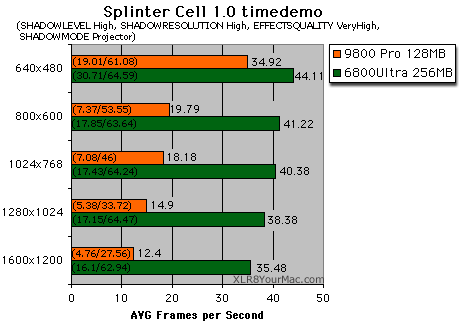
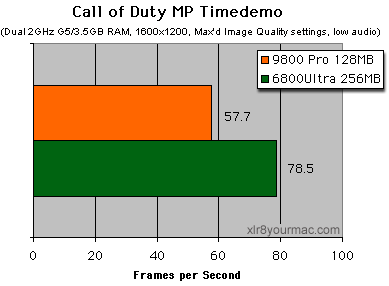
Unreal Tournament 2004 (v3323) Tests:
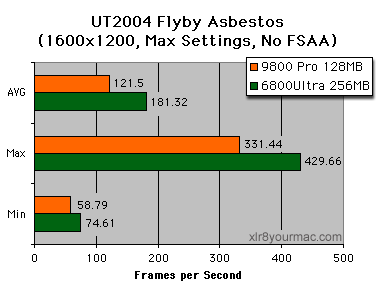
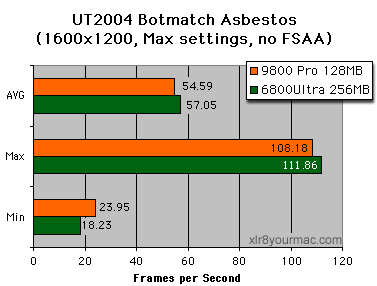
Once you enable FSAA, the 9800 takes nearly a 50% performance hit at these settings in the Flyby test, but then it's ATI's previous generation, not an X800.
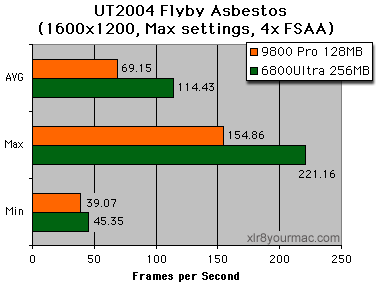
In Botmatch tests, with 4x FSAA (only) enabled the rates aren't significantly lower than w/o FSAA at this resolution. (Since they were already well under either card's limits - but adding 8x AF enabled does lower framerates esp. on the OEM 9800.)
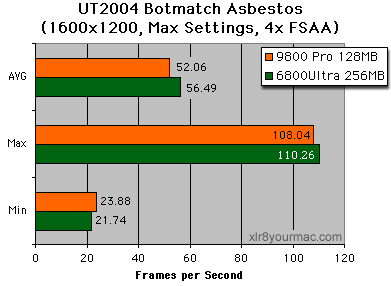
For the 4x FSAA + 8x Anisotropic Filtering tests, I tried both MultiSampleHint2 (default - "nicest smoothing") and MultiSampleHint1 ("fastest smoothing") modes for the Nvidia card (from a note on UT2003 FSAA modes in the FAQ's gaming section here) just to see what difference it would make. (The botmatch test is too CPU bound to show much difference, although there was some benefit in the flyby.) Note with 4xFSAA + 8x AF, the OEM 9800's AVG FPS rate takes a significant hit at this resolution (drops from 52 to just under 39FPS).
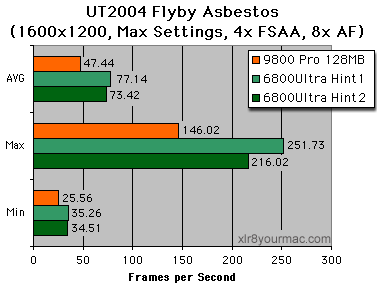
Although Botmatch tests are heavily CPU bound, at these settings the 6800 does show a clear advantage where the older design 9800 is running out of breath.
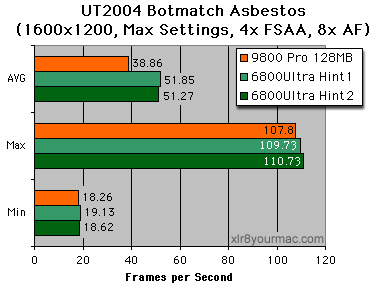
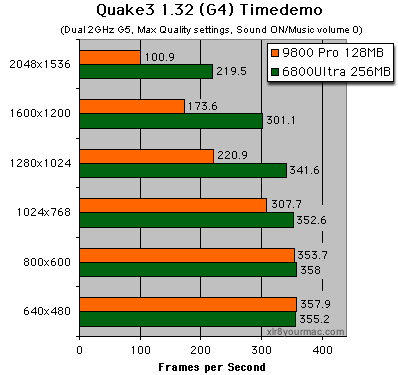
The 6800 shows a huge advantage at high resolution as the 9800 runs out of breath. Not all games scale as well as Quake3 however. (Use of custom configs like boli's (homepage.mac.com/boli/boli_q3config.cfg) can deliver much much higher rates at the expense of image quality, but I figure if you're going to buy a high end card, then you want all the eye candy ON. And with rates like these - there's no need for reducing image quality.)
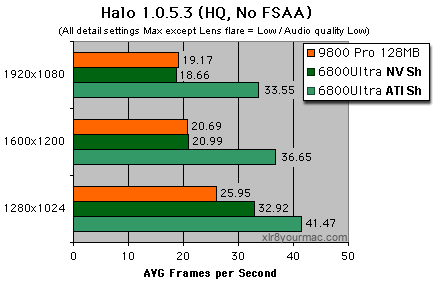
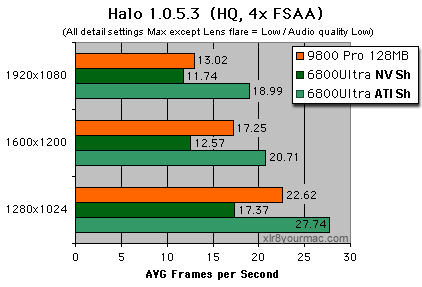
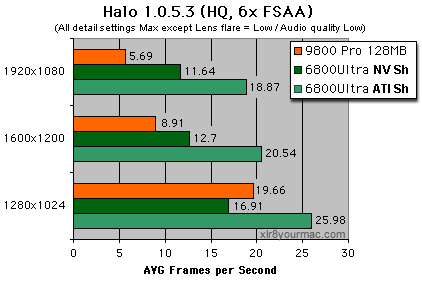
Note: The OEM 9800 Pro had scrambled video at 6x FSAA/1920x1080.
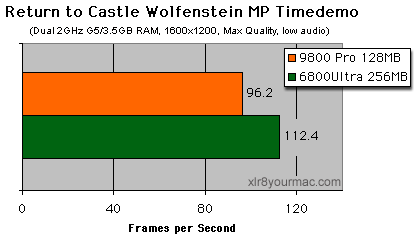
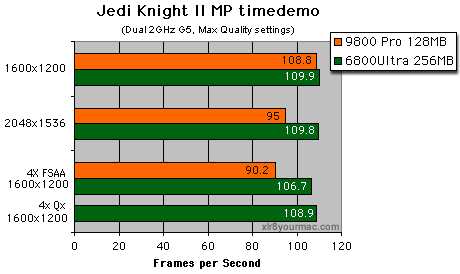
|
|
|
|
|
|
Intro/Photos | 2D/Video Performance | 3D Performance | Game Performance - or - |
|
|
All brand or product names mentioned here are properties of their respective companies. |